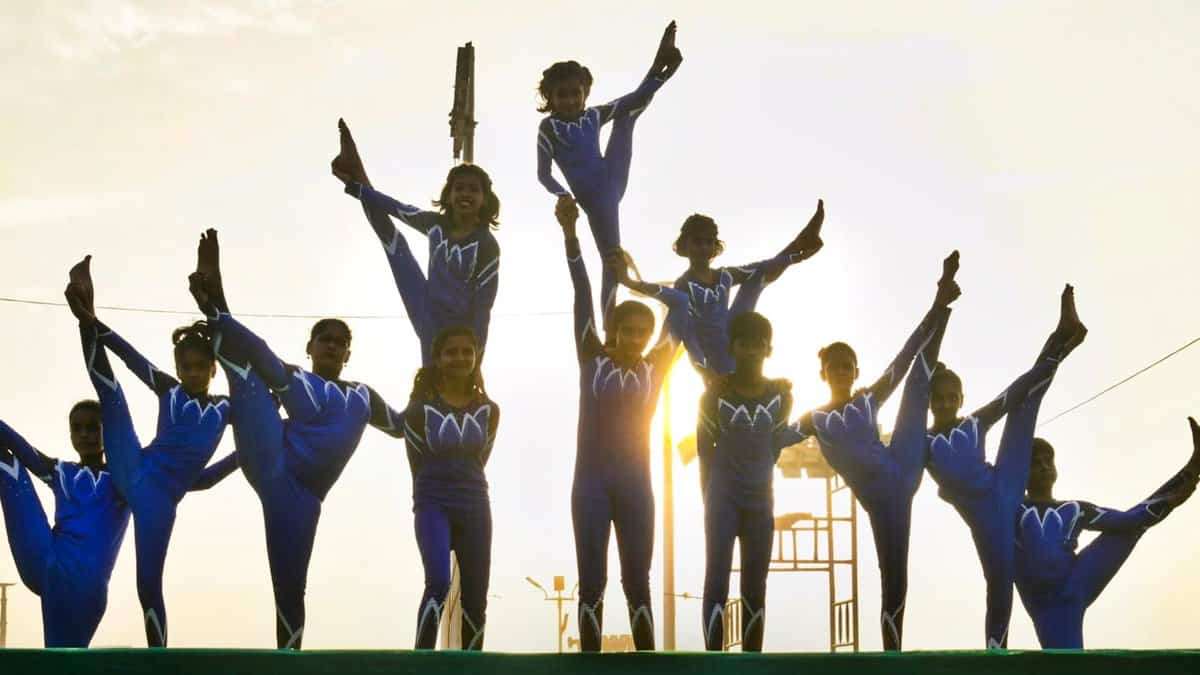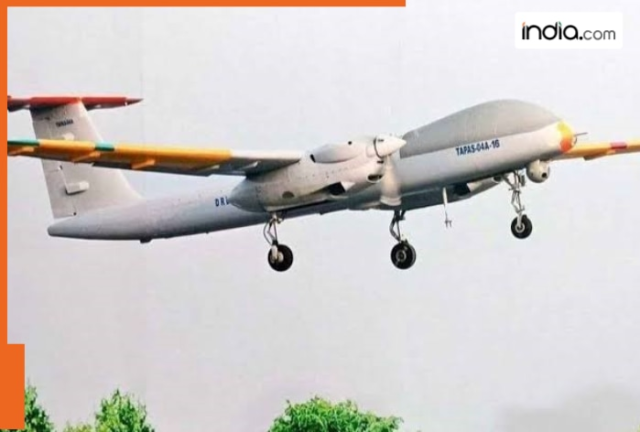The TAPAS drones will be deployed at the important naval base in the Andaman and Nicobar Islands.
The Indian Navy is planning to add 10 TAPAS-BH drones, an advanced unmanned aerial vehicle (UAV) developed in India, to its fleet. These drones, designed for Medium Altitude and Long Endurance (MALE), will be used for maritime surveillance. This move marks an important step in strengthening India’s defence capabilities. A senior naval officer has confirmed the plan to acquire these drones, showing the Navy’s dedication to using homegrown technology for important missions, according to the online platform Defence.in. The TAPAS drones will be deployed at the important naval base in the Andaman and Nicobar Islands. This location is very important because it helps protect major shipping routes in the Indian Ocean, which are vital for trade and security.
The Tactical Airborne Platform for Aerial Surveillance Beyond Horizon-201, or TAPAS BH-201 (Sanskrit: तपस्, meaning “Heat”), is an advanced unmanned aerial vehicle (UAV) being developed in India by the Aeronautical Development Establishment (ADE). It was earlier known as Rustom-II until 2016. The design is inspired by the General Atomics MQ-1 Predator drone.
TAPAS-BH , a medium-altitude, long-endurance (MALE) drone that can fly at an altitude of up to 30,000 feet and stay in the air for 24 hours. It is equipped with EO (Electro-Optical) and SAR (Synthetic Aperture Radar) systems, which help in capturing high-quality images and detailed ground mapping. The drone has a range of 250 kilometers and can carry different types of equipment or payloads weighing up to 350 kilograms.
The TAPAS UAV is manufactured by Bharat Electronics and Hindustan Aeronautics Limited, two leading Indian defense companies. It has a length of 9.5 meters (31 feet 2 inches) and a wingspan of 20.6 meters (67 feet 7 inches), giving it a wide and sleek design for efficient flight. The drone has an empty weight of 1,800 kilograms (3,968 pounds), making it a robust platform capable of carrying significant payloads for various missions.
While the Tapas UAV is still being improved for full-scale production, the Navy has decided to take a practical approach by temporarily using two Drishti-10 drones. These will serve as a short-term solution until the Tapas UAVs are ready.
The Drishti-10 drone, developed through a partnership between Adani Defence and the Israeli company Elbit Systems, is based on the Hermes 900 Starliner model. It will act as a temporary solution and work alongside the 15 MQ-9 Sea Guardian drones that India has already ordered from the United States.
Israel’s Hermes 900 is a medium-altitude, long-endurance drone known for its advanced intelligence, surveillance, and reconnaissance (ISR) capabilities. The Drishti-10, an Indian version of the Hermes 900, is manufactured by Adani Defence and Aerospace at its Hyderabad facility, led by billionaire Gautam Adani. Designed for ISR missions, it can stay airborne for up to 36 hours, operate at altitudes above 30,000 feet, and carry a payload of up to 450 kilograms, making it ideal for long surveillance missions over distances of up to 2,000 kilometers. Over 70% of Drishti-10’s components are made in India, showcasing significant indigenous development.
With its advanced capabilities, the Drishti-10 is a valuable addition to India’s drone program and strengthens its surveillance and defense capabilities.
The Tapas MALE UAV project has faced some difficulties, especially in meeting the required altitude and endurance standards set by the Army and Navy.
To address these challenges, DRDO is making design changes, focusing on reducing the drone’s weight and drag to improve its performance. These upgrades are essential to ensure that Tapas can function effectively in different conditions, whether along mountainous borders or over vast stretches of ocean.
By choosing to develop the indigenous Tapas while also using the Drishti-10 drones as a temporary solution, the Navy is showing its dedication to both building self-reliant defense technology and staying prepared for critical missions.















































